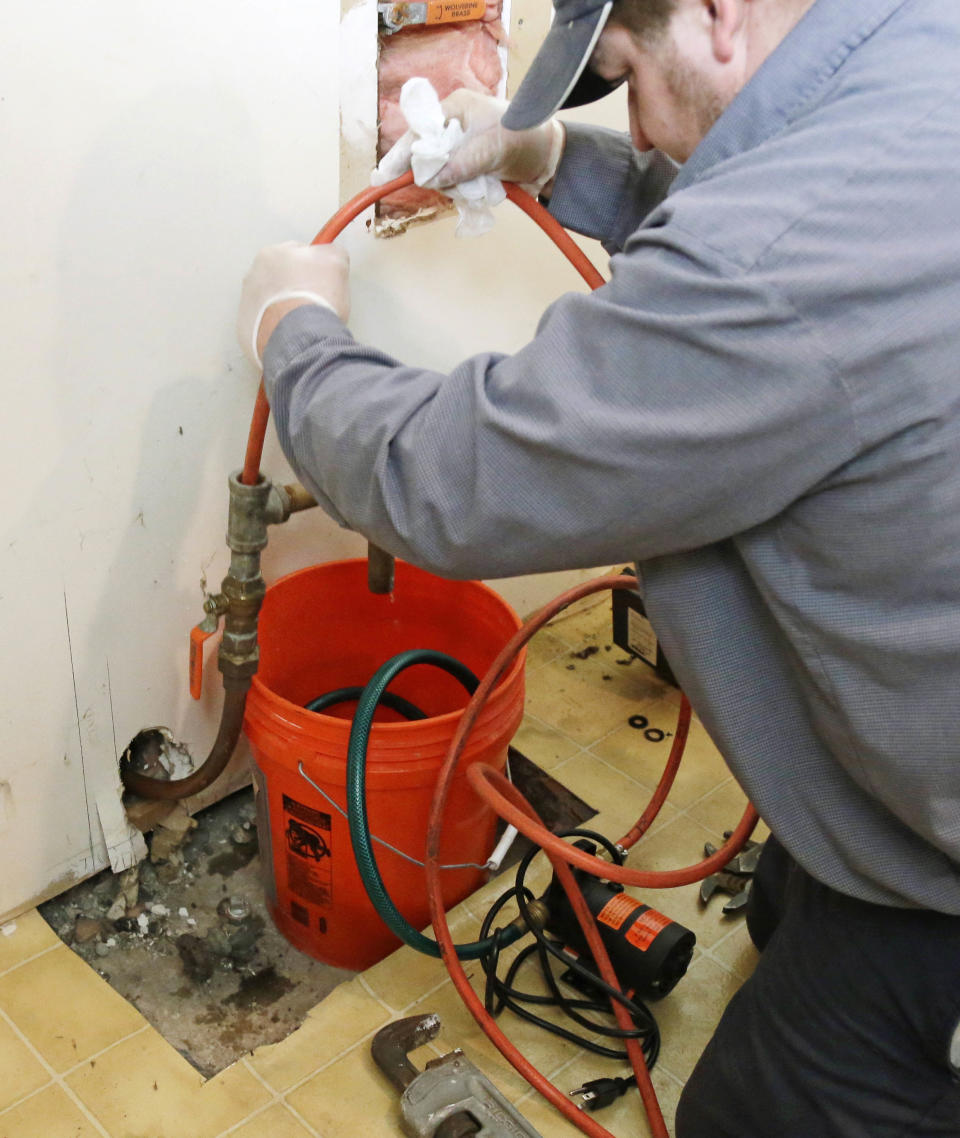A common winter hazard: frozen pipes in your home
It's a telltale sign: you turn on the faucet and ... nothing.
With record cold in much of the nation this winter, many homeowners have had (or will have) to deal with pipes freezing — and then bursting.
Winter storm-related insurance losses "will be more this year due to the extreme cold and the breadth of the territory that is being affected by it," said Peter Foley, vice president of claims for the American Insurance Association. Those losses, which include damage from frozen pipes, total about $1.4 billion a year on average, according to the Insurance Information Institute.
People unaccustomed to extreme, prolonged cold, especially those in the South, are particularly vulnerable, said Robert Hartwig, the institute's president.
"There's a lack of awareness of the fact that a pipe could freeze and what to do about it," he said. For instance, they may not shut off the water to outside faucets, and their homes may have less insulation.
Damage from a burst pipe can vary greatly, depending on how long the water runs unabated.
Some tips on how to protect against frozen pipes, and what to do if one does freeze:
BEFORE THE FREEZE
Water freezes at 32 degrees Fahrenheit, so keep your thermostat significantly higher than that. "You should never turn it below 55," Foley said.
You might leave the water dripping a little bit, advised Ken Collier, editor-in-chief of The Family Handyman.
"That just keeps enough water moving in the pipe so it's less likely to freeze," he said. "If there is some freezing, there is some give in the system because the faucet is open a little bit."
Collier also suggested getting warmer, room-temperature air to where the pipes are. That can be as simple as opening the cabinets under the kitchen sink, especially if the sink is on an exterior wall. "In some cases, a fan can help with that," he said.
Similarly, if pipes run through a crawl space, using a fan to blow in warmer air from the house's interior might help, he said.
Better insulation is the ultimate fix, Collier said, but getting to the pipes can be tricky because it often means breaking through walls.
WHEN A PIPE FREEZES
Do frozen pipes always burst? "You can get lucky," Collier said.
"Once it's frozen, the damage is done," he said. "Some kinds of pipes break easier than others when the water inside freezes."
Copper pipes are said to be more vulnerable.
It may seem obvious, but there are two clear ways to know if a pipe has frozen.
"A sign of a frozen pipe is you have no water," Foley said.
The other sign: flooding. That can happen when the burst pipe starts to thaw out and the water begins flowing again.
If the break is in an exposed piece of pipe, it may mean a flooded basement floor. If it's in a piece that's not exposed, the water could seep through a wall.
It's critical that homeowners know how to shut off the water to the entire house; that's "usually the only way to get the water pressure off the frozen place," Collier said.
Yes, it can be an inconvenience — you can't take a shower or wash the dishes. You can only flush the toilets once. But it's the best way to prevent further damage, he said.
WHAT NEXT?
Call a plumber, unless you have the skills and confidence to do the repair yourself.
A temporary fix might involve cutting away the damaged piece of pipe and replacing it with a rubber hose and clamps until the plumber gets there. The degree of difficulty could depend on how accessible the pipe is.
There also are various tapes and putties that might temporarily close the break.
And call your insurance agent. Homeowners policies generally cover damage related to pipes that freeze and burst.
"The repair of the pipe might be a few hundred dollars," Hartwig said. "The real issue comes in if the leak damages ceilings, floors, furniture, carpeting, electrical work that might be in the wall."
The average claim is about $5,000, according to Foley.



